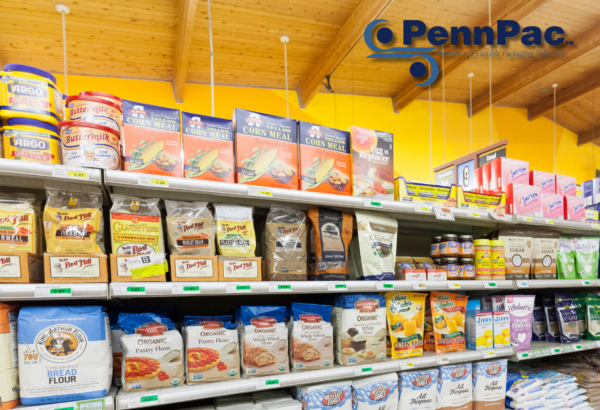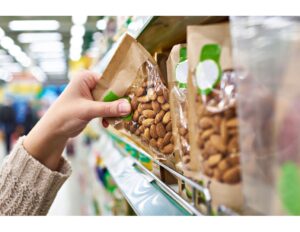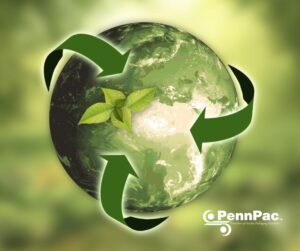
Flexible Packaging: For Converters and End Users
Table of Contents
Understanding Flexible Packaging
Definition
Flexible Packaging is achieved by using non-rigid materials. Common examples are films, foils, papers to produce bags, pouches, overwraps, and liners.
These materials can be easily shaped to accommodate various products and is prevalent in food, beverage, and cosmetics.
Key Characteristics
- Lightweight and Space-Efficient: Reduces shipping costs and storage needs.
- Highly Customizable: Can be tailored in design, size, and features to meet the specific demands of branding strategies.
- Diverse Material Options: Made from a range of substances, including plastic, paper, metal, or biodegradable materials. In fact, cater to different markets.
Why Converters Prefer Flexible Packaging Film Solutions
Converters prefer flexible packaging for its ease of production and reduced material usage. Therefore, this type of packaging offers numerous advantages.
- Efficient Production Processes: Optimized processes that lower manufacturing costs.
- Versatility: Adapts easily to various customer requirements, enhancing the appeal to converters.
Research indicates that flexible packaging may reduce material costs by up to 30% compared to traditional packaging.
Flexible Packaging for Printers
Role in Printing
Flexibles serve as a critical component in the printing industry. Therefore, providing customizable solutions that boast high-quality print capabilities.
Stunning visuals and effective branding are essential for attracting consumers. Thus, making the role of packaging design crucial in marketing.
Needs Addressed
- Durability: Producing materials that maintain quality using various printing technologies (digital, offset, etc.).
- Customization: The need for adjustable designs and scalable solutions to accommodate various material substrates.
Examples of Flexible Packaging
Stand-up pouches with attractive designs and product security. Or, printed roll-stock used for over-wrapping baked good products. For this reason, these suggestions exemplify the integration of semi-rigid packaging in printing. Brands can effectively use flexible solutions to enhance their market presence.
Research shows that the adoption of flexible solutions in the printing industry has surged by 20% over the past five years.
End-User Packaging Film Solutions
Definition
End-user packaging is the final packaging product, directly engaging consumers. This includes retail packaging designed to provide barrier and protection.
Meeting Consumer Demands
- Convenience Features: Re-sealable and easy to use. Enabling customers to preserve quality.
- Eco-Friendly Options for Flexible Packaging: Aligning with rising trends towards sustainable and responsible packaging.
Case Studies in Flexible Packaging
Semi-Rigid packaging in end-user applications include resealable snack pouches. As a result, these pouches maintain freshness. All the while, compostable food bags appeal to environmentally conscious consumers. Brands utilizing flexible packaging films benefit from enhanced product appeal for many reasons.
Industry Applications
Overview
- Food and Beverage: Common applications include pouches for snacks, flexible wraps for sandwiches, and stand-up bags for beverages. Of which, extend shelf life and maintain product freshness.
- Pharmaceuticals: Non-rigid packaging is frequently used in sachets for medication and blister packs. This ensures compliance with health regulations, preserving the integrity of products.
- Personal Care: This industry utilizes flexible packaging for items such as travel-sized pouches. Providing convenient access to consumers while promoting branding opportunities.
- Electronics: Protective films for devices and anti-static packaging film solutions. Specifically, to safeguard sensitive components during transport and storage.
Emerging Trends in Flexible Packaging
- Sustainability Initiatives: Increased focus on biodegradable and recyclable packaging solutions is reshaping product development.
- Smart Packaging Technologies: The integration of intelligent features such as QR codes and NFC tags, enhance functionality.
Benefits of Flexible Packaging for Converters
Cost-Effectiveness
Non-rigid packaging provides significant cost savings through reduced material costs. It’s lightweight nature minimizes shipping expenses and overall logistics costs compared to traditional rigid packaging options.
Customization
Versatility in packaging allows converters to create unique designs tailored to meet specific branding requirements. This includes various printing techniques, finishes, and sizes.
Sustainability
Flexible film packaging is leading the charge in eco-friendly practices. Furthermore, manufacturers are using biodegradable or recyclable packaging film. Thus, addressing environmental concerns and reducing waste.
Flexible Packaging and Product Protection
Semi-rigid film packaging enhances product integrity through superior barrier properties. Features such as tamper-evident seals and moisture resistance keep products safe and fresh longer.
A study found that flexible packaging can increase product shelf life, by up to 50%.
Challenges and Solutions
Common Challenge
- High Initial Investment: Adopting new designs and materials often requires considerable upfront costs.
- Regulatory Compliance: Navigating the complexities of the health safety and industry standards can be daunting.
- Supply Chain Complexity: Material sourcing and logistics management can present difficulties in achieving consistent quality.
Innovative Solutions
- Technological Advancements: New developments in material science enhance the use of sustainable materials, making them more readily available.
- Digital Printing: This technology reduces costs and increases efficiency by allowing for quick modifications to designs.
- Recycling Processes for Flexible Packaging: Educating manufacturers and consumers about recycling options supports sustainable initiatives.
Many companies are successfully tackling these challenges with innovation and strategic planning. Both of which, drive progress in flexible films.
Research confirms that advancements in biodegradable materials are significantly reducing challenges.
Future of Non-Rigid Packaging
Predictions in Flexible Packaging
The flexible packaging market is expected to grow tremendously. As sustainability goals become more integrated into business strategies, experts predict that consumer preferences will drive further adoption across multiple sectors.
Market Growth Areas
Innovations in materials, such as bio-based plastics, will likely contribute to this growth, driving demand for flexible solutions.
For this reason, experts estimate the global flexible packaging market will reach $700 billion by 2030.
Conclusion
Flexible packaging offers immense benefits for converters and end-users. Above all, enabling superior customization. By ensuring cost-effectiveness, and promoting sustainability, modern packaging cannot be overstated. As consumer expectations evolve, the demand for film solutions will continue to multiply.
If you’re looking for ways to elevate your brand with flexible film solutions, contact us today. Together, we can explore how our innovative options can meet your unique needs.




